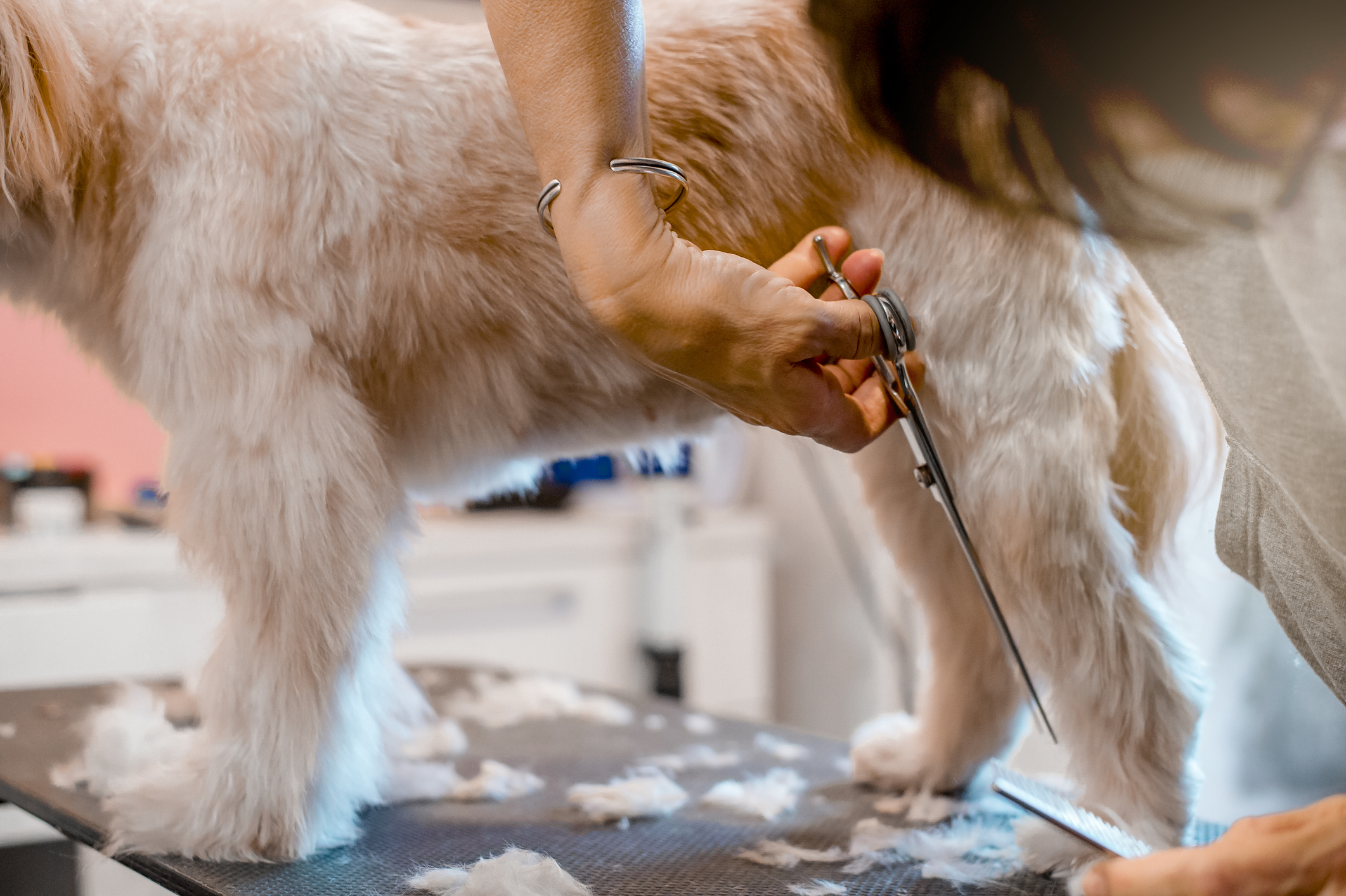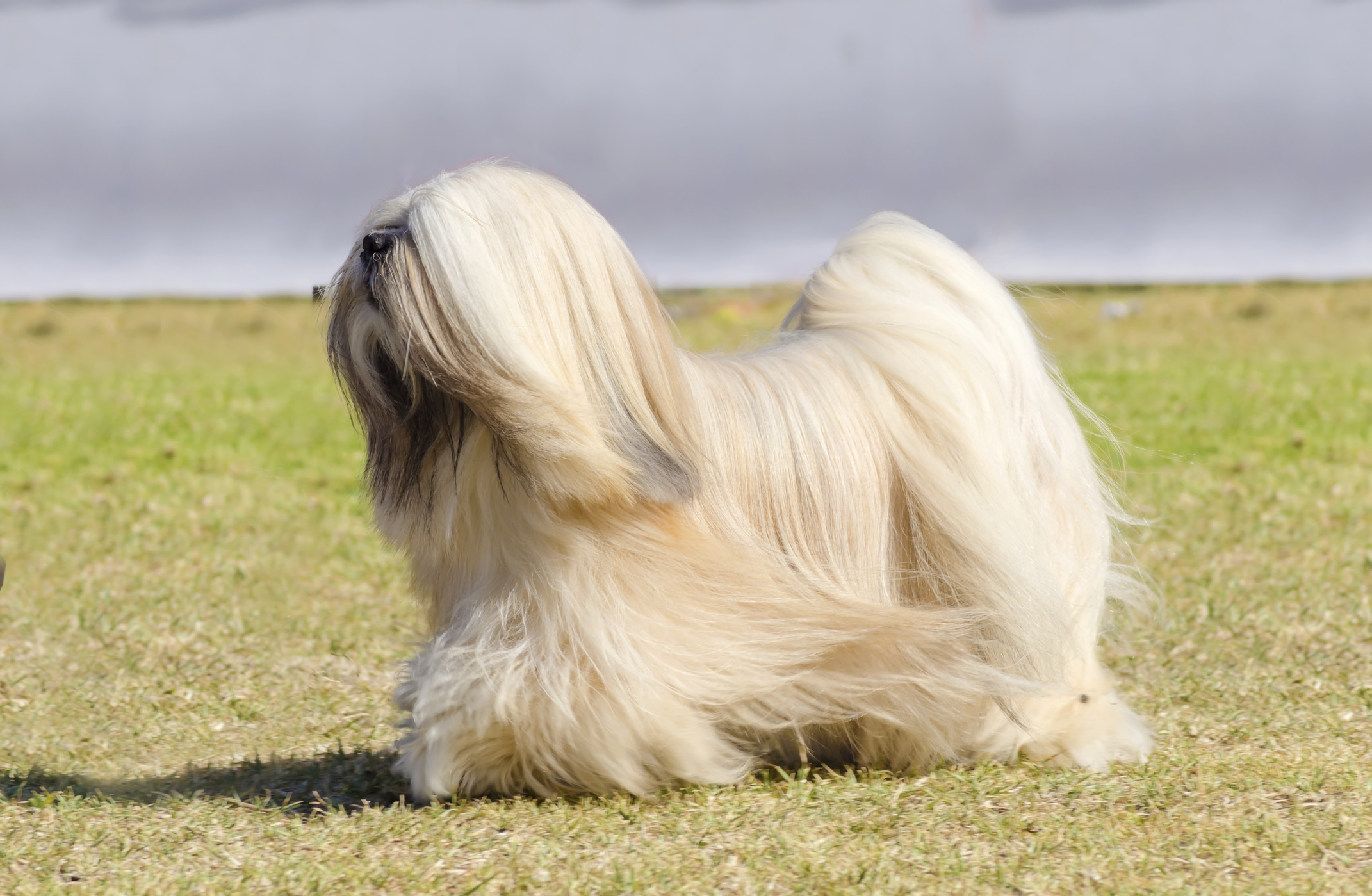
In the summer of 2021, Ugo Apuzzo and Floriano Bollettini spent months crisscrossing Italy in search for what they believed was the perfect fabric. Each day, as part of their program at École des Hautes Etudes Commerciales de Paris, they’d meet with potential prospects and, between espressos and glasses of Chianti, try to convince them that they should save the trimmings that would otherwise be tossed.
Their efforts reaped dividends five month later. Retracing their steps, the men collected nearly a ton of animal hair. The commercial spinners in Italy that they brought it to told them it was better than fine cashmere.
But it wasn’t the hair of sheep or goats or alpaca. It wasn’t even vicuña, one of the finest, most expensive wools in the world used by top fashion houses like Zegna, which weaves it into expensive sweaters.
Chiengora—the art of turning dog hair into textiles—has lived in relative obscurity for decades, coveted by hobbyists and fanatics. But efforts are underway to turn the unlikely fiber into a hyper-sustainable fabric. The term is a portmanteau of chien, French for dog, and “gora,” borrowed from the angora breed of rabbits and goats whose hair is used to make fabrics.
“In Germany alone we have each year 1,600 tons of dog fibers that are just thrown out,” says Ann Cathrin Schönrock, a pioneering chiengora entrepreneur. “Why are we throwing these high quality fibers away instead of using it as a sustainable alternative yarn?”
More From TIME
The idea of turning dog hair into comfortable clothes dates back millennia. The first animals to be domesticated by humans, canines also became the first creatures willing to sit long enough for their hair to be harvested in the way sheep and goats are for wool and cashmere today. The breeding of small dogs for their hair was a cornerstone of trade among the Salish peoples of North America.
But the use of dog hair declined as sheep and mass-produced textiles became more common. For North American weavers, that was around the 19th century as European explorers and traders introduced cheaper alternatives. Colonies producing cotton and wool for textile mills around the world made the chiengora process far more expensive, compared with its peers.
Today, however, the fashion industry has become a major consumer of key resources and a contributor to pollution. Popular fabrics such as cotton typically require huge amounts of water to grow, and the environmental impact of materials such as wool and leather has come under criticism for taking up land and producing methane, which adds to global warming.
It’s led to investments in the hunt for alternative materials. General Motors Co.-backed MycoWorks, which turns mushrooms into imitation leather, is said to have raised $187 million, while Modern Meadow is trying make fake leather via vat-grown collagen. Even textiles made of algae are attracting research attention.
But the answer could already be sitting in a growing number of households. A recent survey from the American Veterinary Medical Association found that nearly half of American households had a dog, compared with 38% in 2012.
The logic is simple. Many breeds of dog shed twice a year, and their owners take them to groomers for a trim anyway. Why toss the trimmings when they can be so valuable?
A superior breed
The potential superiority of dog hair has long been known to a select number of material scientists. A paper from North Carolina State University 20 years ago helped pave the way by evaluating 18 different breeds, concluding even then that “chiengora may prove to be a profitable and useful fiber.” Others from academics led by Audrone Ragaisiene at Kaunas University of Technology in Lithuania found that dog hair was so warm, it could be used in socks to brave the coldest winters and help patients with rheumatic diseases.
When Surjit Ramamoorthy, an assistant professor at PSG College of Technology in India, spent long hours procrastinating by grooming Shuffney, his beloved Indian Spitz, his mother suggested he may as well make it his next research topic. Intrigued, he began research and has since written several papers analyzing strands and weaves of dog hair down to a microscopic level in an effort to find the perfect blend of properties.
Depending on the breed, dog hair can be hardier than camel hair—one of the toughest commonly farmed animal fibers—and better than wool in almost every way. One commercial spinner who worked with Schönrock says some of the material provided was so fine it could be compared to vicuña.
One of the best breeds that Surjit has worked with is Lhasa apso—so much so that he wrote an entire paper focused on the breed. The dogs are short, but their hair is long, with better insulation. “If someone can make this commercial, it would be so good, because there’s a lot of scope for using dog hair,” he says.

Golden retrievers, on the other hand, may be popular as pets, but they produce hair with less wax and stronger fibers and, Surjit says, their coats are shorter than you might expect, resulting in less usable material.
The American Kennel Club suggests that dogs with long undercoats, such as the Chow Chow and Bernese Mountain Dog, work best. Each strand should be at least an inch and a half long. Samoyeds are especially prized by hobbyists for their soft white coats.
On the craft website Etsy, searches for “chiengora” turn up hundreds of results. They run the gamut from spinners who turn bags of your pet’s hair into yarn to knitters hawking socks and beanies made from the material.
There, handspun Samoyed yarn can set you back $420 a kilogram—more than double the price of fine cashmere, which is prized by luxury textile mills like Loro Piana. That’s still below the €600 ($636) per kilogram cited by the 2022 edition of industry textbook Fibers as the “typical price” of chiengora. A kilogram of cashmere, by comparison, runs €40 to €120.
The dual barriers
Despite the clear benefits of weaving dog hair into textiles, the material has yet to take off commercially.
The main issue is twofold. One is cultural: When the idea comes up in conversation, many think of Cruella de Vil, the fictional villain of One Hundred and One Dalmatians who covets the eponymous pets for their spotty fur. But proponents say most people quickly get past their inhibitions once they understand that the process is harmless.
Rachel Casey, a veterinarian and director of the UK adoption agency Dogs Trust, said she could understand its appeal. Over the past few decades, dogs have shifted from being guards and ornaments to members of the family, a trend intensified by the pandemic. Owners are looking for ways to feel even closer to their pets.
“It’s probably the increasing number of dogs, but also the changing role of dogs in people’s lives, that have led to the increase” in interest in chiengora, Casey says. “From a dog health point of view, combing is actually a good thing to do, so it’s clearly something that could be a really sustainable way of creating yarn.”
The bigger issue, though, is gathering it at scale. Where other fibers have generations of harvesters collecting hairs in exactly the right way, getting commercial quantities of chiengora would require teaching households and groomers exactly how to correctly comb their pets, in the same way cashmere goats are today.
A dog’s outer coat is typically too tough; hair on the foot can be too short. The cleaner and softer undercoat around the chest, however, is an ideal source. Once the hair is combed, it’s sorted through a process called carding to align the strands so it can be processed into yarn and eventually weaved.
An easier alternative to combing would be using clipped hair from grooming salons—but there the problem is consistency. You don’t want to mix the silken threads of a Lhasa Apso with the notoriously matted curls of a poodle, all at wildly different lengths.
Over the next two years, Surjit aims to use industrial techniques to soften the hair from such suppliers. That could involve using chemicals to wash the hairs and reduce their spikiness—regardless of which coat they come from—so that they’re soft to the touch. He says he’s already solved some of the other issues by blending dog hair with synthetic materials: A mix of 75% Lhasa Apso and 25% polyester is an ideal cocktail of insulation and comfort. But even this approach depends on the kindness of strangers.
“There is enough material out there, but it’s not like sheep rearing, where you’ll find hundreds together,” Surjit says. His constant hunt for more Lhasa apso hair has turned every car ride into a scouting expedition. “Near my area, whenever I see one I stop my vehicle, go to the owners’ home and negotiate to cut their hair.”
After working with dog hair gathered from Italian groomers, Bollettini and Apuzzo got their Chiengora Project into the prestigious incubator Station F. Later that year, they merged with Schönrock’s company, Yarnsustain Schönrock Uhl, in 2021. While it reaped sales and publicity (and even appeared on the German version of Shark Tank), it suffered from an inability to scale.
It shuttered in April 2023, and Bollettini and Apuzzo parted ways, but Schönrock continues to try to find a way forward. Pre-sales of her book that details the best breeds and methods of gathering their hair will start from November.
Unlike Surjit, Schönrock remains wary of introducing synthetic materials into the mix. She believes that more research and education will reap the Holy Grail—pure, consistent chiengora harvested ethically and sustainably from the near-billion dogs living around the world today.
“I’m so deeply convinced this will be a legacy I can leave,” she says. She hopes her upcoming book will educate dog owners and supercharge the ethical gathering of hair at scale. “As soon as we achieve that and scale the sourcing,” she says, “we will have an unbelievably high-quality yarn.”
More Must-Reads from TIME
- How Donald Trump Won
- The Best Inventions of 2024
- Why Sleep Is the Key to Living Longer
- Robert Zemeckis Just Wants to Move You
- How to Break 8 Toxic Communication Habits
- Nicola Coughlan Bet on Herself—And Won
- Why Vinegar Is So Good for You
- Meet TIME's Newest Class of Next Generation Leaders
Contact us at letters@time.com